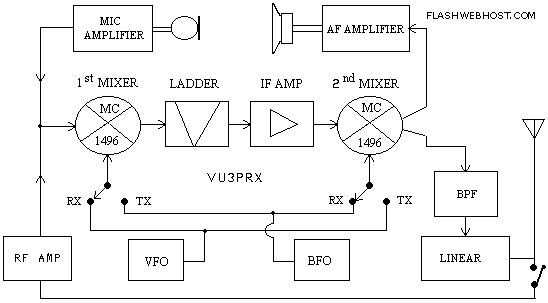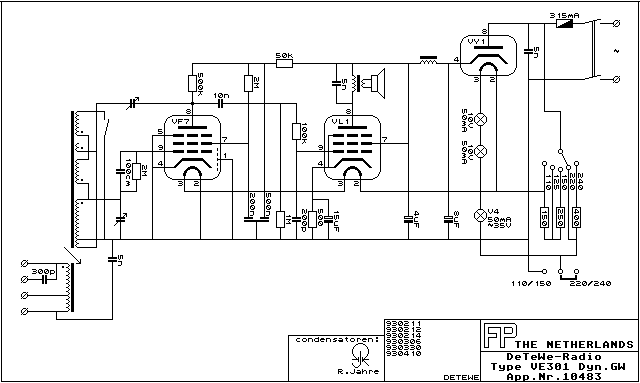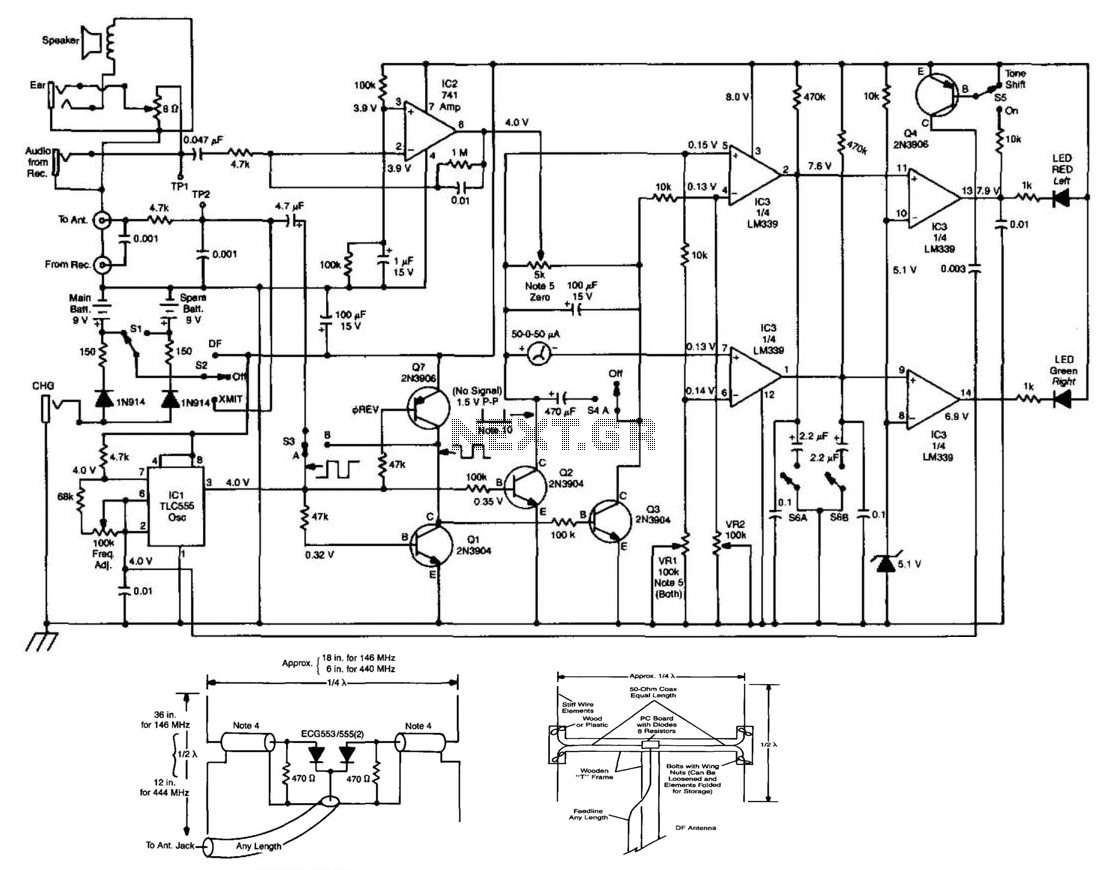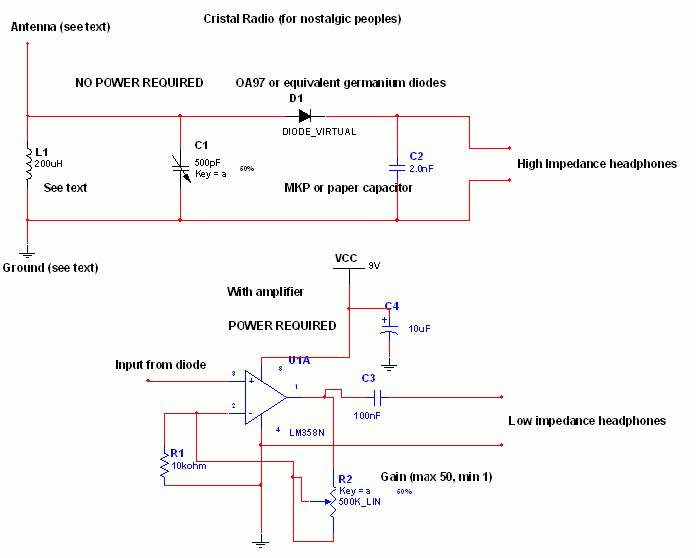
am radio
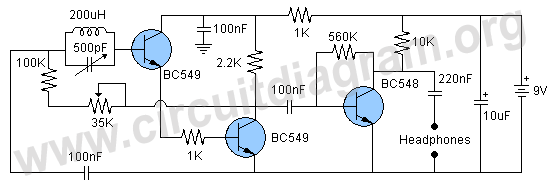
In a previous article on constructing a radio, a simple crystal radio receiver circuit was discussed. The schematic presented here is also a straightforward AM radio circuit; however, it does not utilize a crystal but instead employs a high-gain preamplifier stage using the BC 549 transistor. The circuit requires only a few components to create a quality AM receiver. To make a 200µH coil, use #26 enameled copper wire and wind 60 turns around a ferrite rod with a 1 cm diameter and 7.6 cm length. The circuit can be powered using a 9-volt battery.
This AM radio circuit is designed to efficiently receive amplitude modulated (AM) signals while maintaining simplicity in its construction. The use of the BC 549 transistor as a high-gain preamplifier enhances the sensitivity of the receiver, allowing it to pick up weaker signals that a standard crystal radio might miss.
The circuit's design includes a few essential components: the BC 549 transistor, a variable capacitor for tuning, resistors for biasing the transistor, and the aforementioned coil. The coil's specifications are critical; it should consist of 60 turns of #26 enameled copper wire wound around a ferrite rod measuring 1 cm in diameter and 7.6 cm in length. This configuration creates a 200µH inductor, which is optimal for the frequency range of AM broadcasts.
Powering the circuit with a 9-volt battery provides sufficient voltage to operate the transistor in its active region, ensuring reliable amplification of incoming signals. The circuit can be tuned to different frequencies by adjusting the variable capacitor, allowing the user to select various AM stations.
Overall, this AM radio circuit exemplifies a balance between simplicity and performance, making it an excellent project for those interested in electronics and radio communications. The straightforward assembly and minimal component count make it accessible for beginners while still offering an engaging challenge for more experienced hobbyists.In previous article about how to make a radio we have discussed a simple crystal radio receiver circuit. The schematic mentioned here is also a simple AM radio circuit but it is not using a crystal, it is using high gain preamplifier stage of transistor BC 549.
The circuit is using only few components to make a good quality am receiver. For makin g 200uH coil take a #26 enameled copper wire and wound 60 turns on a 1cm diameter and 7. 6cm long ferrite rod. The circuit can be powered with a 9 volt battery. 🔗 External reference
This AM radio circuit is designed to efficiently receive amplitude modulated (AM) signals while maintaining simplicity in its construction. The use of the BC 549 transistor as a high-gain preamplifier enhances the sensitivity of the receiver, allowing it to pick up weaker signals that a standard crystal radio might miss.
The circuit's design includes a few essential components: the BC 549 transistor, a variable capacitor for tuning, resistors for biasing the transistor, and the aforementioned coil. The coil's specifications are critical; it should consist of 60 turns of #26 enameled copper wire wound around a ferrite rod measuring 1 cm in diameter and 7.6 cm in length. This configuration creates a 200µH inductor, which is optimal for the frequency range of AM broadcasts.
Powering the circuit with a 9-volt battery provides sufficient voltage to operate the transistor in its active region, ensuring reliable amplification of incoming signals. The circuit can be tuned to different frequencies by adjusting the variable capacitor, allowing the user to select various AM stations.
Overall, this AM radio circuit exemplifies a balance between simplicity and performance, making it an excellent project for those interested in electronics and radio communications. The straightforward assembly and minimal component count make it accessible for beginners while still offering an engaging challenge for more experienced hobbyists.In previous article about how to make a radio we have discussed a simple crystal radio receiver circuit. The schematic mentioned here is also a simple AM radio circuit but it is not using a crystal, it is using high gain preamplifier stage of transistor BC 549.
The circuit is using only few components to make a good quality am receiver. For makin g 200uH coil take a #26 enameled copper wire and wound 60 turns on a 1cm diameter and 7. 6cm long ferrite rod. The circuit can be powered with a 9 volt battery. 🔗 External reference
